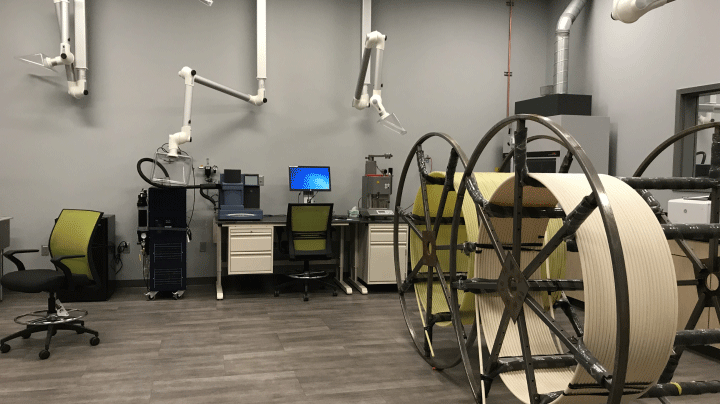Many of us are plagued with the stress of constantly being “connected” and are looking for opportunities to unplug and take a break from continuously being available for phone calls, texts, and email.
However, many live in rural communities and have the opposite problem. They are desperately trying to connect. Bridging the digital divide boils down to access, education, and practical application.
Internet-Reliant Society
People without internet access have limited participation in the digital economy and have less capacity to complete important and often required tasks. For a moment, consider how many times a day you look up something routine on the internet, like a phone number, address, or directions. Did you know Google answers 3.5 billion searches worldwide per day?
Now imagine that smart phones disappeared for a day. Some of us wouldn’t be able to function because printed phone books or maps aren’t handy anymore. Day to day office functions rely so heavily on email and texting that if the internet or a cell tower goes down, work nearly comes to a standstill for the day.
Digitally Invisible
There are definitely benefits to not being so tightly tethered, but local and national leaders have acknowledged serious ramifications for communities – and parts of communities – that are essentially digitally invisible in a global society that is more and more interdependent and connected each day. The extent of our broadband infrastructure determines the future vibrancy of our towns.
Digital Exclusion
Internet access can change the expected outcomes of poverty for our most vulnerable populations who run the risk of being on the wrong side of the digital divide.
Already burdened with diminished life expectancy, higher chances of health issues and an increased risk of becoming a victim of a crime or violence, this part of our community is not only overlooked but becoming forgotten. As more of our city services are offered exclusively online, including job applications, the existing gap is widening and further isolating this portion of our population.
But digital exclusion comes with a high cost. Economic and talent development have been linked to access to technology. Many areas currently feel the impact of an unqualified, disconnected workforce.
Access, Education, and Practical Application
Access to technology coupled with a general familiarization (and not a fear of) computers, touch screens, online transactions, and the cloud are critical work skills for today. On a personal and professional level, for all age groups, for all types of jobs, the possibilities of success are contingent upon access to a high-speed internet. Facing changing population challenges, the call to action for city leaders is to provide more and more cost-effective services via data-driven decisions.
In a global trend of urbanization, people are moving back into cities. In some cases, the densification of the urban population is turning rural communities into ghost towns. However, smaller rural communities that aggressively pursue high speed broadband access are able to retain their residents. Millennials in particular expect continuous, seamless connectivity and demand speed and reliability – no matter where they are. And, as the Baby Boomers continue to retire, the field of digital healthcare is skyrocketing. Only fiber optic cable can meet the expectations of high speeds, fast downloads, and the explosive demand for bandwidth-hungry video.
Digital Equity
According to the Federal Communications Commission 2018 Broadband Deployment Report, “over 24 million Americans still lack fixed terrestrial broadband at speeds of 25 Mbps/3 Mbps. Rural and Tribal areas continue to lag behind urban areas in mobile broadband deployment.”
All parts of our communities – rural, urban, even Tribal – are in critical need of high-speed broadband networks. Lev Gonick, Chief Information Officer, Arizona State University, spoke at the recent Broadband Communities Summit about his work with the Navajo Nation. He said the school was noted for who it helped succeed, rather than who it excluded. “Digital equity is our civil rights challenge,” he said.
Buy It, Borrow It, Build It
Creating a citywide fiber infrastructure network seems like an overwhelming task. Like all impossible tasks, it’s best to approach them one step at a time.
Start with an asset inventory. As a city, you own the most valuable asset, the right-of-way. You may have more assets than you know. Then the next step is to build the foundational layer of technology infrastructure for the fiber network, which can be accomplished with a conduit system.
You could leave it to your local telecommunications company partner, you could lease dark fiber, or you can construct a network yourself.
The hurdle, of course, is funding. Each option reflects a significant financial investment. While challenging for larger cities, this obstacle is far more of a roadblock in rural areas because there is no perceived return on investment by the traditional telecommunications companies. So, in many cases there is not a willing partner available. These circumstances leave rural communities faced with fewer choices. They are forced to allow their citizens to be passed by or to investigate DIY options.
Conclusion
Essentially, a portion of our population is mis-trained for manufacturing jobs that don’t exist anymore. When community leaders consider how to connect the unconnected, it gives equal opportunity for all to participate in jobs that are part of the digital economy and allows room for growth and advancement for all residents and businesses.




